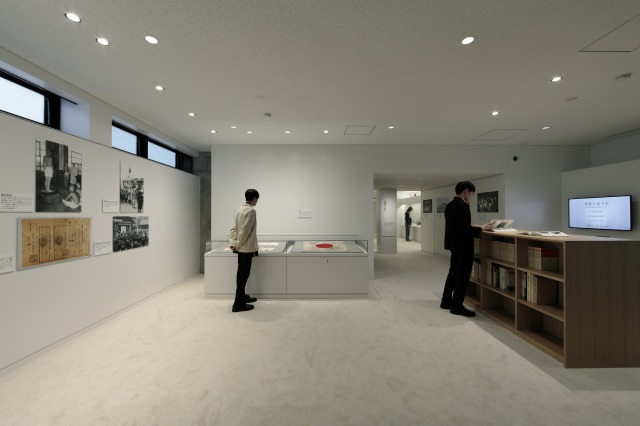
The 2023 AIA International Design Awards, Commendation for Interior Architecture

As war becomes a distant memory in Japan, passing on the lessons of war and history to future generations is essential.
The project seeks to create a serene space where visitors contemplate the memory of the war and its impact on Japan’s history.
The museum’s mission is to share and preserve artifacts and transmit the value of war lessons and their historical significance from one generation to another. As a renovation of an aging exhibition and preservation facility, the museum strives to create a space that accommodates both the artifacts and the visitors while efficiently using the existing building.
Renovation project of exhibition and preservation facility dedicated to commemorating the war-dead Tokyo residents. Completed in 1988, it displays artifacts entrusted to it by the bereaved families of Tokyo. Originally, over seven hundred artifacts were on display at the maximum capacity of the space. Such overcrowded exhibitions hindered visitors’ viewing experience.

Considering proper preservation, challenges arose in regulating the temperature due to direct exposure to natural light and obsolete air conditioning systems. The interior and fixtures also required renewal nearly three decades after the completion.
A tranquil space dedicated to Tokyo residents who never returned from the frontlines delicately adorned in soothing hues and materials. We intended to create an environment that transports visitors to a distinct realm, signified by natural and artificial light qualities, to evoke a one-of-a-kind sense of time and space.


It showcases our commitment to depicting the dynamic nature of time and space through precise lighting control. It involves a seamless transition from the serene illumination of natural light representing present-day Tokyo to the evocative tones of artificial light reminiscent of the war-torn past, ultimately returning to the comforting embrace of natural light in the end. By integrating lighting as a crucial element, we incorporate the visitor experience and safeguard the preservation of valuable artifacts.
As visitors step into the warmly illuminated first floor, they embark on a journey to discover the history of the facility, which is seamlessly connected with the Tokyo residents’ everyday life.


Upon entry, visitors are welcomed with a gentle influx of natural light. It carefully diffused and deflected multiple times to ensure the preservation of the exhibits remains intact.
The bridge section showcases a poignant work by esteemed photographer Ken Domon, capturing the drafted civilians departing from Yurakucho Station (near the Ginza area) as well-wishers, including family members and neighbors, cheering and waving farewell.
Symbolically, the bridge area serves as a profound connection between Tokyo and the war zone, inviting visitors to embark on a figurative journey from their everyday lives in Tokyo toward the realm of battle and endurance.


This area connects the realms of the living and the dead, bridging the gap between Tokyo and the war zone, the past and the present.
An array of artifacts retrieved from distant battlefields are thoughtfully exhibited within an area gently secluded from the touch of natural light.
These artifacts are carefully curated according to their respective battle zones. At the center of the display space, we placed a comprehensive map to explore far-reaching battlegrounds, offering a panoramic view of diverse conflicts and their geographical significance.


Walking further into the exhibit, they encounter the area featuring letters penned by soldiers to their beloved from the battlefields.
Retracing steps along the designated path, contemplating the profound sacrifices made by the fallen soldiers.


After crossing the bridge, returning to the now and current. The area is dedicated to the current memorial services and retrieval efforts of the Tokyo government.
The 2023 AIA International Design Awards, Commendation for Interior Architecture